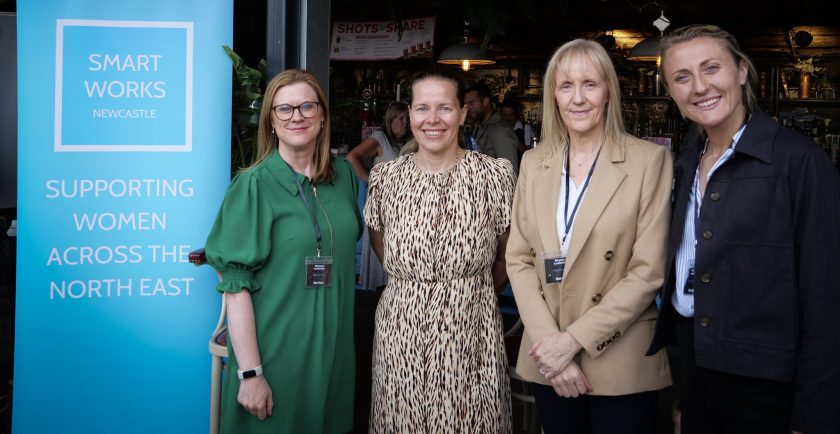
Building a PE-ready Leadership Team – Part III – Maximising your PE Appeal
8 min
The final instalment of this three-part blog series aims to provide some practical steps you can take to maximise PE investment appetite. Having focused on building leadership capacity for a deal in Part I and the expectations of Private Equity in Part II, this end to the trilogy seeks to focus on putting that into practice.
As an executive search and recruitment partner, Blair West works with numerous leadership teams in the North East and throughout the UK as they prepare for a private equity investment round by assembling a “backable” team. More commonly still, we work directly with PE firms as they look to supplement, strengthen and – yes – upgrade management teams post-investment.
Over five years, we have worked with businesses that have successfully and unsuccessfully navigated PE deal processes. Some firms have utilised our network and engaged our support in recruiting pre-PE involvement; however, we understand that recruitment needs to happen at the right time and for the right reasons. Hiring ahead of deal is not always the smart thing to do.
The aim of this blog is to look at the two strands of making a leadership team’ deal ready’: investing in your own people and planning for the best possible hires to fill any gaps.
Essential Roles
There are very few ubiquitous roles in a PE-backed business. It is well established that most businesses need a clear leader (MD/CEO), although there are many examples where this role is successfully shared. Most PE houses have the right to appoint a Non-Executive Chairperson as a condition of their investment, and similarly, most PE houses will ensure that there is an experienced Finance Director / CFO in post.
The CFO is the custodian of their investment and manages cash flow. Since most transactions are leveraged with debt, they are responsible for managing external funding relationships and ensuring adherence to covenants. It is, therefore, a crucial role, and if you do not have a sufficiently experienced one, it is something you should give immediate attention to and factor into your planning.
Beyond that, it very much depends on the business model and growth strategy. Most PE houses will expect the management team, supported by the Chair, to design a leadership structure appropriate for the business model and growth plan. The expectation is that every function critical to the delivery of the growth plan is led by a high-calibre and ambitious individual aligned with the growth journey.
Blair West has supported PE-backed businesses in hiring a range of leadership roles, from CRO to CProductO, CTO to COO, and CMO to Head of M&A. The requirement depends very much on the business model. PE funds’ increased propensity to back consultancy and professional advisory businesses in recent years has, for instance, brought an increased focus on CPO appointments and people functions more broadly because this is critical to growth planning.
Your Existing Team
Assessing the suitability of your current leadership team can be a challenging process. Working closely with a group of people can make you less able to take an objective view of each member’s strengths and weaknesses. Being open about the desire for growth and investment is key. Rather than invoking a culture of fear about future planning, bringing members of the leadership team into the discussion can help pinpoint who is best placed to drive development forward.
Private equity firms will do their diligence on the senior leadership team and form views on the capabilities of each member, particularly the leaders of any function that will be key to the delivery of the growth plan. The PE firm will want to have a clear sense of exactly what each of the leaders has brought to the table to date and what they offer going forward as the business goes through the next stage of growth.
The investment paper submitted to the committee will include an extensive section on the management team, strengths, motivations, gaps and perceived weaknesses. The Investment Director who drafted it will be interrogated about their views as part of a challenging investment committee process, and however positive the relationship you and your team have built with that individual, there will be limited scope for sentiment.
Being realistic about the degree to which existing colleagues have the attributes for the next phase of growth and for a PE cycle can be tough. It’s natural to harbour loyalty and faith in people who have helped get a business to the point where seeking capital is a viable prospect.
However, being overly optimistic about people’s experience and capabilities is short-sighted, can lead to problems further down the line and is unlikely to build confidence in your own judgement. It is far better that you have assessed your team’s capabilities and arrive at the investment process with a plan, even if it has yet to be acted upon. Potential investors will value that pragmatism.
An investment committee will look far more kindly on an investment opportunity with two leadership gaps and a plan in place to address those than one with an undercooked management team, which they are being asked to believe is complete. They may well be factoring in the changes that need to be made, the potential for resistance and putting that in the difficult pile.
When assessing the potential gaps in your team, it is advisable to think more broadly than function expertise and extend your thinking to scenario experience. If, for instance, you plan to expand internationally, does anyone in your team have experience doing so? Has anyone on your team had experience with the next stage of growth? The team that got you from £0m to £15m revenue might not, collectively, understand what is required in a £50m revenue business.
Training and Development
Businesses that have demonstrably invested in their staff are invariably better placed to attract investment and to utilise it for growth. Again, this doesn’t need to be an off-the-shelf strategy.
For some existing team members, external training or development may be beneficial. For others, setting up internal or external coaching or mentoring systems can be an effective form of development. If you have a talented but relatively green FD, why not pair them with a PE-experienced CFO for coaching and mentoring? Do they know what to expect going into a transaction?
In essence, it comes back to realism. It’s strategic to retain and nurture existing talent. However, having audited your existing team, it may become clear that something needs to be added. Being open to opportunities to bring in new skill sets will prove to investors how much the management team is focused on the long-term success of the business.
Recruitment: Pre or Post-Deal?
This is where it gets tricky. Suppose the honest assessment of your team’s capabilities and experience and open and frank discussion about their appetite for the PE journey has highlighted some gaps in the senior leadership team. Should you act on that now or wait for PE to do it?
It would be satisfyingly self-serving to say that businesses should press ahead with all identified hires as early as possible, backed up by an overused and overly simplistic cliché: time waits for nobody. We pride ourselves at Blair West, however, on endeavouring to put our client’s interests ahead of our own, and we recognise that this is a nuanced conundrum.
The most immediate impact of senior hires will be increased overheads and less profit, which, with a multiple applied, has the potential to be costly to deal value. That risk should be mitigated by any CF advisor worth their salt, who will make a case for a very valid add-back to EBITDA for recent hires, representing an investment in the future. It is worth checking with your CF advisor to see if they support that logic before pressing ahead with significant hires.
The fact remains that loading your senior management team ahead of a deal could leave you with a bloated overhead base if the deal does not happen and/or growth is slower than expected. It may be prudent, therefore, to base any decision on two factors: a) your confidence that the deal will be complete and b) whether you would make that hire in the next 12 months, regardless of the deal.
If you are confident of a deal and this represents bringing forward a quality, value-adding senior hire who is essential to your growth plan regardless, then pressing ahead is likely the best option. Strengthening the leadership team will build confidence in the business’s ability to deliver the plan, increasing investment appetite. Likewise, the fact that the Board have identified a gap and taken steps to address it (even if the process is not concluded) builds confidence in their calibre.
An Investment Director would far rather be writing in their investment paper that a strong shortlist of Chief Commercial Officers is currently in the final stages of the interview than a gap has been identified that needs to be addressed.
Finally, postponing key hires only slows down the growth strategy. As previously discussed in Part II, the PE investment cycle is short, with ambitious growth targets. You want to avoid spending the first six months treading water whilst you search for, identify and onboard the correct people to deliver it. It’s far better to get a running start on the plan.
Future-Proofing your PE-Ready Team
This series of blogs has focussed on hires that will impact the short- and medium-term performance of the business and the achievement of the plan. It should not be overlooked that, depending on the profile and motivations of the existing leadership team, a crucial part of any “PE-ready leadership team” might be a long-term succession candidate for this round or subsequent ones.
It really is cherry-on-top territory, but if you can demonstrate that you already have a coherent succession plan that will lead the business into the investment process after this one, it will only add to investment appeal.
Summary
If you’ve made it to the end of this three-part epic blog, congratulations! It turns out that working flat-out on both sides of numerous deal processes for five years has generated a significant volume of observations and recollections. Perhaps a book is in the offing.
In summary, if you are preparing for PE investment, ask yourself the following questions:
- Do we have the leadership capacity to manage a deal process and continue growing the business? Where might cracks emerge?
- What are the critical functions of achieving our growth plan, and do each of the leaders have the necessary calibre and experience to deliver it? Do they know what good looks like for the next stage of growth?
- Are there specific elements of the plan where our leadership collectively lacks experience (international, M&A?)
- Are we aligned as a leadership group regarding what we want to achieve? Is everyone up for the next phase?
- Is it possible to upskill existing leadership through training, development, coaching and mentoring?
- Are there gaps in the team or areas of leadership that need to be strengthened?
- Are they critical to the growth plan, with or without PE? If so, we should press ahead.
- Can I get the PE house involved in the recruitment process – their input will be valuable.
- Do I know any honest and brilliant search firms who understand private equity, write remarkably long blogs, and can help us ensure we attract the best candidates in the market?
Blair West operate out of Newcastle and London. We can be contacted at [email protected], and we’d be more than happy to put you in touch with our relevant sector experts.



